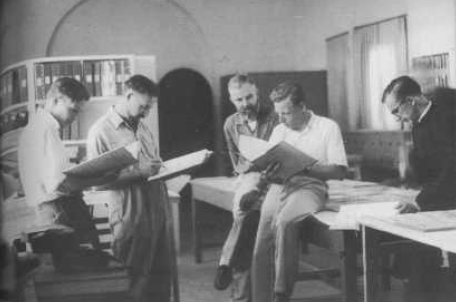What is soon, faithful adherents? Three weeks ago I busied this term as I was just sending my latest sacrosanct brainchild into the digital aether. A lot of things have happened since then, which have kind of hampered me in my dedication to bring you all truth, all the time. Looking upon the frozen wastes of humanity's once great condition, I wept bitterly and decided to enroll myself in the university one final time to attain my teacher's degree and thus enable myself to come into a position of unadulterated power as an explicator of divine rigtheousness and absolute justice to the spongy minds of young adults and all those who choose to sit (or happen to find themselves) in front of my desk and have the blessed opportunity to look upon my monumental gaze of knowledge and grace.
As you may understand, this has increased the burden of my earthly activities considerably, and I labor like esteemed Atlas to keep on shouldering the weight of all your ignorance and stupidity. For which I expect absolutely nothing in return, devout followers! (Though more readers would be nice....) But yes, this blog has suffered somewhat, especially since the feedback also remains sparse. So speak up, loyal readers, and weigh in when you have something to say about a topic or just want to praise my glorious intellect! I will try to get back to some more sumptuous exposees about the Bible in future installments, but today is of course Halloween.
Even in the Netherlands this is becoming celebrated more and more, though my generation still went from door to door with own-made Chinese lanterns, singing songs in honour of Saint Martin of Tours on November 11th. Halloween is probably derived of the old Celtic festival of Samhain, taking place on October 31-November 1, during which the people prepared themselves for the approaching dark months of winter and the boundaries between this world and the supernatural one were supposed to be exceptionally porous. All Saint's Day (November 1-2), a day of paying respects to that wide selection of saints Christianity has available and praying for the souls of the departed to reach heaven, is also supposed to have influenced the commercial milk-cow that is Halloween these days.
So why the candy? You know that human beings' preference for sweet food is evolutionary hardwired into their brains because it is naturally rich in vitamins and fattening, which makes it handy to eat to gain some extra insulation against the cold of winter. Oh, you didn't?
Well, there you go. Saved your day once again.




